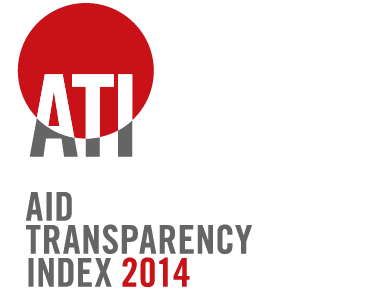Further Findings – #11.
Geo-coding: its huge potential and current limitations
Back to OverviewGeo-coding, i.e. tagging aid activities with information on their exact location so that they can be mapped allows for quick and easy spatial analysis of aid information.
The sub-national location indicator in the ATI assesses the progress that the world’s major aid agencies have made on geo-coding. The number of organisations scoring for publishing the sub-national location of their aid activities in the ATI increased from 19 to 26 between the 2013 and 2014. However only 14 of those are publishing this information to IATI and only two donors provide sub-national coordinates for 100% of their projects.
This information is increasingly being used to create interactive maps of aid projects on donor’s data portals. See for example UK DFID, UNDP (pictured), African Development Bank, Slovakia, Netherlands, UN habitat. This list demonstrates how donors small, large, bilateral and multilateral are all beginning to geo-code their projects. But apart from generating pretty visualisations, what can geo-coding add to aid delivery?

Geo-coding has several potential benefits, including increased:
- Transparency: between governments and citizens in both developed and developing countries as it is possible to see easily how and where funds are being spent
- Accountability: it could allow flows to be tracked and citizens to feedback on projects on the ground, reducing corruption
- Effectiveness: Enables government and donors to see the big picture of who is doing what, where and when. This makes it easier to monitor project implementation and progress, and collaborate and coordinate efforts across sectors and regions
- Efficiency: Visually mapping projects enables duplication to be avoided by seeing what projects are happening where and allows the areas of greatest need to be targeted by overlaying additional data sets, for example water points or hospitals
Evidence of the potential impacts of geo-coding are already amassing. Some projects are using geo-coded data to gain participant feedback via mobiles, such as DevTrac in Uganda. Integrity Action’s Development Check and Aid Data provide platforms through which citizens can provide feedback on projects. Geo-coded data is also being used to analyse the impact of certain donors such as China or aid allocation within specific countries. However these examples also highlight the need for good quality, up-to-date data, which is currently lacking in many cases, as found during the Ebola epidemic. The ATI team found that data quality was lacking during the sampling of IATI data. Seven donors failed the tests because the location given was not a specific sub-national location.
Another limitation is the comprehensiveness of geo-coded data. For example, for five donors, sub-national location was found for less than 15% of the projects assessed through the IATI data quality tests and only two donors had data available for all their projects.
Aid Data, D-portal (pictured), HDX, NGO map signify the beginnings of efforts to deliver the full picture of aid activities for any one location or sector. However, given the pace of donor progress on the supply of up-to-date and comprehensive geo-coded data, there is still a long way to go before these sources achieve this.

